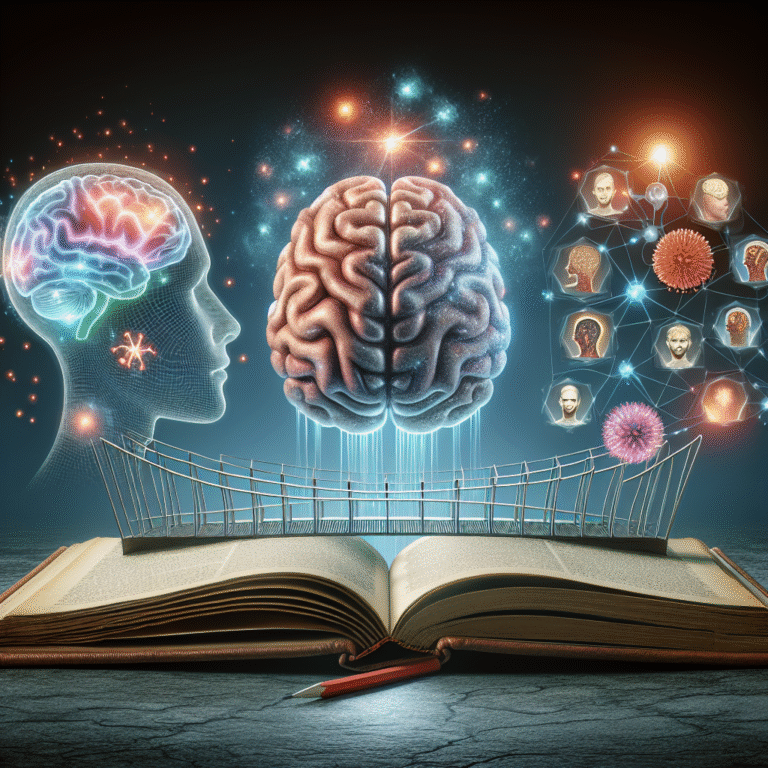
Introduction
Imagine if we could unlock the secrets of our minds while sleeping, tapping into the very essence of our thoughts and feelings. EEG, or electroencephalography, has revolutionized our understanding of brain activity and opened new doors for innovation across various fields. From sleep studies that aim to understand the mysteries of dreaming to brain-computer interfaces (BCIs) that can help paralyzed individuals regain control of their environment, the diverse applications of EEG are nothing short of transformative. In this article, we’ll delve into the intricacies of EEG technology, explore its multifaceted applications, and reveal how it bridges science and everyday life.
What is EEG?
At its core, EEG is a non-invasive technique that records electrical activity in the brain through electrodes placed on the scalp. These electrodes capture neural communication, providing a real-time glimpse into brain waves that reflect different states of consciousness. The technology has evolved significantly since its inception in the early 20th century, becoming essential in fields ranging from psychology to neuroscience.
How EEG Works
EEG measures the voltage fluctuations resulting from ionic current flows within the neurons of the brain. These fluctuations are represented in waves, categorized into different frequencies:
- Delta Waves (0.5 – 4 Hz): Associated with deep sleep.
- Theta Waves (4 – 8 Hz): Linked to light sleep and relaxation.
- Alpha Waves (8 – 12 Hz): Occur during calm, relaxed states when awake.
- Beta Waves (12 – 30 Hz): Present during active thinking and problem-solving.
- Gamma Waves (30 Hz and higher): Involved with information processing and cognitive functioning.
Understanding these brain waves is crucial as we journey from sleep studies to brain-computer interfaces, revealing the remarkable diverse applications of EEG.
The Impact of EEG in Sleep Studies
Understanding Sleep Patterns
One of the most compelling applications of EEG lies in sleep studies. Researchers have utilized EEG extensively to understand sleep architecture, identifying various stages of sleep and their significance. A comprehensive study published in the Journal of Sleep Research outlines how EEG-based polysomnography can classify sleep stages, paving the way for better understanding of sleep disorders like insomnia and sleep apnea.
Case Study: The Influence of Sleep on Memory Consolidation
A notable study conducted at the Harvard Medical School utilized EEG to explore how REM sleep contributes to memory consolidation. Participants who engaged in a learning task showed enhanced recall abilities following a night of sleep rich in REM cycles. This research underscored the importance of adequate sleep for cognitive function, solidifying EEG’s role in sleep-related studies.
Detecting Sleep Disorders
EEG is instrumental in diagnosing sleep disorders. Polysomnography (PSG), which includes EEG along with other physiological measurements, is considered the gold standard in sleep medicine. Conditions such as narcolepsy, REM sleep behavior disorder (RBD), and various forms of insomnia can be pinpointed using EEG data.
Case Study: Diagnosing Narcolepsy
A groundbreaking study published in Sleep Medicine Clinics highlighted the use of EEG in the differential diagnosis of narcolepsy. The researchers analyzed sleep patterns, noting specific EEG markers associated with the disorder. Their findings validated the efficacy of EEG as a diagnostic tool, revealing the essential nature of EEG in sleep studies.
Monitoring Sleep Quality
The diverse applications of EEG extend to monitoring sleep quality in both clinical and non-clinical populations. Wearable EEG devices are emerging, allowing people to gain insights into their sleep patterns from the comfort of their homes. These devices analyze sleep duration, phases, and disturbances, helping users identify habits that might improve their overall sleep health.
Physiological Research with EEG
Cognitive Load and EEG
Beyond sleep studies, EEG has proven valuable in cognitive research. By monitoring brain wave patterns during different tasks, researchers can assess cognitive load—essentially how much mental effort is being exerted. This understanding has implications for occupational health, education, and even user experience design.
Case Study: Cognitive Load in Educational Settings
A study by researchers at Stanford University examined cognitive load in students during various learning paradigms using EEG. By analyzing brain wave patterns, they discovered that multimodal teaching methods led to lower cognitive load and better retention rates. This study exemplifies how EEG can influence educational best practices.
Decision-Making and Neural Responses
EEG has also illuminated the neural bases of decision-making processes. By analyzing brain activity during critical decision-making tasks, researchers have uncovered a wealth of insights into how choices are made, revealing the neural signatures associated with different types of decision-making strategies.
Case Study: A Neuroscience Approach to Behavioral Economics
A collaborative study involving researchers from MIT and Harvard employed EEG to investigate the neurological components of economic decision-making. Their findings demonstrated that specific brain wave patterns correlate with risk-taking and reward anticipation, providing significant implications for behavioral economics.
Brain-Computer Interfaces (BCIs): A New Frontier
The Basics of BCIs
The concept of BCI involves direct communication pathways between the brain and external devices. EEG-based BCIs translate brain activity into commands, enabling individuals to control computers, prosthetic limbs, or even virtual environments using thought alone. This revolutionary application exemplifies the potential of EEG, transitioning from sleep studies to technology that can reshape lives.
Rehabilitation and Assistive Technologies
BCIs have critical applications in rehabilitation, particularly for stroke patients and individuals with disabilities. EEG-based BCIs can facilitate communication and movement, providing new avenues for those with limited mobility.
Case Study: Enhancing Motor Skills Post-Stroke
A study from the University of California investigated the use of EEG-based BCIs in stroke rehabilitation. By using real-time feedback from EEG signals, patients were able to relearn motor skills faster than traditional rehabilitation methods alone. The ability to harness EEG data in such a clinical setting showcases its transformative potential.
Gaming and Entertainment
Beyond clinical applications, EEG has carved out a niche in the gaming and entertainment industries. EEG headsets allow users to interact with games through their thoughts, introducing novel ways to engage with technology.
Case Study: Neurogaming at Its Best
A pioneering project in neurogaming developed a game that allowed players to control characters using their brain waves. Participants reported a sense of immersion and exhilaration, demonstrating how EEG could redefine the realm of entertainment. The implications for user interaction can lead to major advances in the gaming industry.
The Future of EEG: Challenges and Opportunities
Ethical Considerations
As we advance from sleep studies to brain-computer interfaces, ethical concerns surrounding EEG technology must be addressed. The potential for misuse, privacy breaches, and consent issues represent significant challenges. Continuity in ethical discourse is essential to ensure that the benefits of EEG technology are maximized while safeguarding individual rights.
Innovation and Accessibility
With technological advancements comes the promise of greater accessibility. As EEG technology becomes more affordable and user-friendly, its applications will likely expand into everyday life. Imagine smart homes that adapt to your mood through EEG feedback, or educational platforms that cater to individual cognitive loads.
Research and Development
Academic and corporate research into EEG technologies is crucial for further innovations. Investment in cross-disciplinary projects will yield multi-faceted applications, enhancing fields as diverse as healthcare, education, and entertainment. Collaborations among neuroscientists, engineers, and policymakers will drive future breakthroughs.
Conclusion
From sleep studies to brain-computer interfaces, the diverse applications of EEG are reshaping our understanding of the human brain and our interaction with technology. As we’ve explored, EEG technology offers invaluable insights into sleep patterns, cognitive functioning, and even assists in rehabilitation. The potential for EEG to transform lives is immense, yet it comes with responsibilities that we must acknowledge.
Like an unexplored frontier, the future of EEG is promising. As we continue to bridge the gap between neuroscience and everyday applications, we can fuel progress while fostering a responsible dialogue around the ethical implications. Embracing the diverse applications of EEG could very well empower humanity in ways we have yet to even imagine.
FAQs
1. What is EEG, and how does it work?
EEG (electroencephalography) is a technique that measures electrical activity in the brain. It uses electrodes placed on the scalp to capture the voltage fluctuations caused by neural activity, providing information about different states of consciousness.
2. How is EEG used in sleep studies?
EEG is extensively used in sleep studies to monitor sleep architecture, diagnose sleep disorders, and assess sleep quality. It helps researchers classify sleep stages and identify issues like insomnia or sleep apnea.
3. Can EEG technology be used outside of clinical settings?
Yes, EEG technology has applications outside of clinical settings, including cognitive research, gaming, and even in the development of neurofeedback therapies for mental wellness.
4. What are brain-computer interfaces (BCIs), and how do they relate to EEG?
BCIs are systems that enable direct communication between the brain and external devices. EEG-based BCIs use brain activity data to translate thoughts into commands, aiding individuals with mobility impairments or allowing for new interactions in gaming.
5. What are some ethical concerns related to EEG technology?
Ethical concerns include privacy issues, potential misuse of brain data, and the need for informed consent. Ongoing discussions are necessary to ensure responsible use of EEG technology in both clinical and commercial applications.
With its multifaceted applications, EEG stands as a testament to the power of human ingenuity and the quest for understanding our most complex organ— the brain. Whether enhancing sleep, driving innovation, or enabling communication through thought, EEG is a remarkable tool poised to redefine our lives.

















